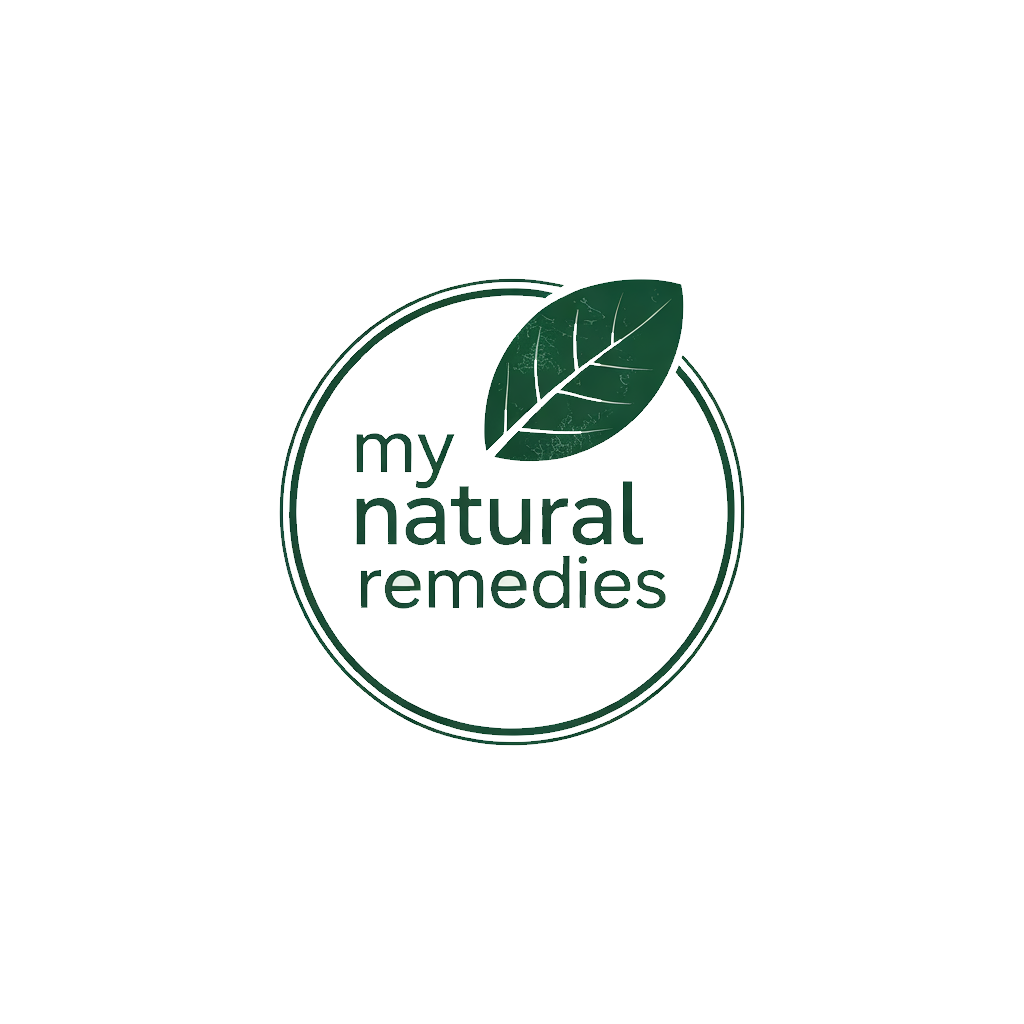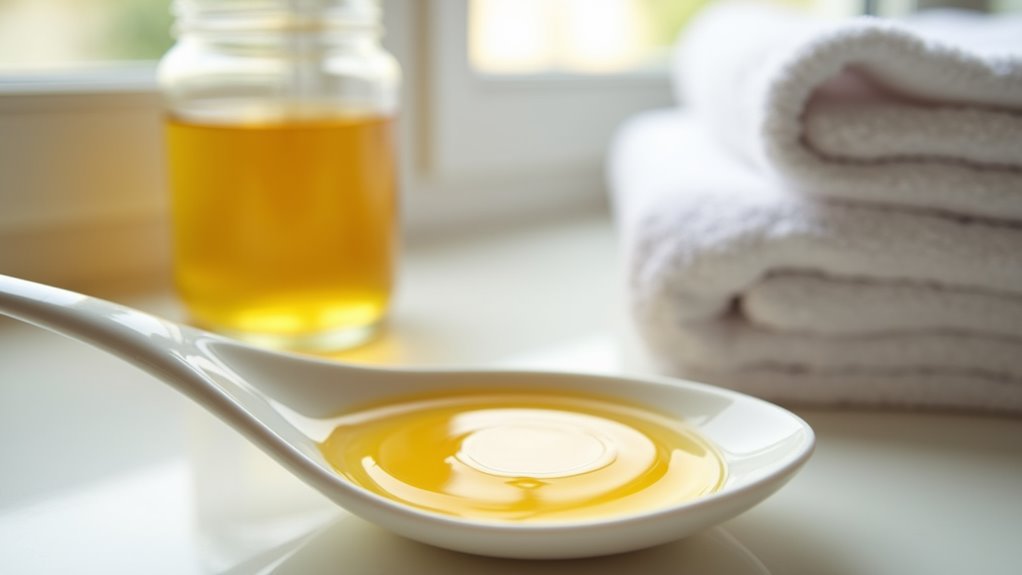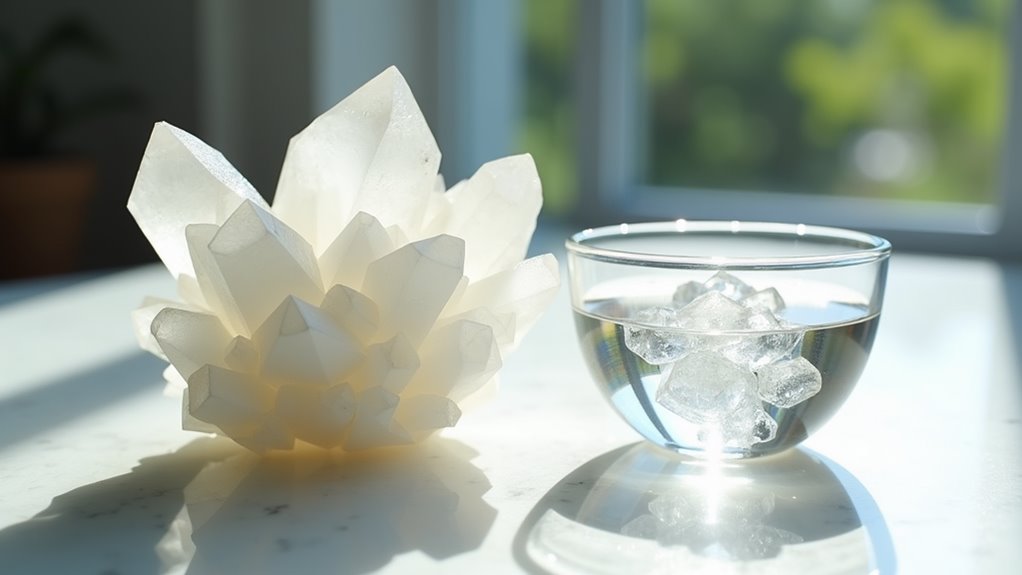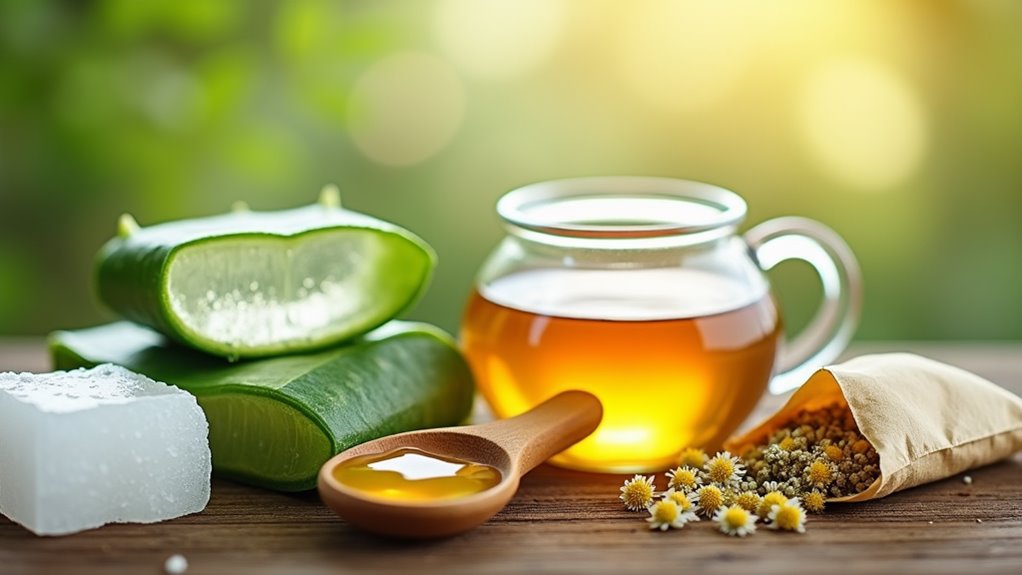Oil Pulling With Coconut Oil- Detoxify Your Mouth Naturally!
Oil pulling with coconut oil is an ancient Ayurvedic practice that can naturally detoxify your mouth and improve oral health. You’ll swish one tablespoon of coconut oil in your mouth for 15-20 minutes each morning before spitting it out. The oil’s antimicrobial properties, particularly its lauric acid content, help combat harmful bacteria while supporting your mouth’s natural balance. When done regularly, you’ll experience fresher breath, healthier gums, and potential whole-body benefits that might surprise you.
What Is Oil Pulling and Its Historical Origins
Oil pulling, an ancient Ayurvedic practice that dates back thousands of years to India, involves swishing oil in your mouth for 15-20 minutes before spitting it out. This traditional wellness technique was originally part of a holistic healing system called Ayurveda, which focused on creating harmony between body, mind, and spirit.
When you’re trying oil pulling with coconut oil, you’re joining a community of wellness enthusiasts who’ve rediscovered this time-tested practice. The ancient practitioners believed this method could draw out toxins, balance the doshas (body energies), and promote oral health.
They typically used sesame or sunflower oil, but today’s practitioners often prefer coconut oil for its antimicrobial properties. In Sanskrit texts, this practice was known as “Gandusha” or “Kavala Graha,” and it was performed daily as part of morning rituals alongside meditation and yoga. A daily practice is essential for experiencing the full benefits of oil pulling.
You’re participating in a tradition that’s been passed down through generations of healers.
The Science Behind Coconut Oil’s Antimicrobial Properties
While many traditional remedies lack scientific backing, coconut oil’s antimicrobial properties have been extensively studied and verified by modern research. The secret lies in its high concentration of lauric acid, which makes up about 50% of coconut oil’s composition.
When you introduce this powerful medium-chain fatty acid into your mouth, it breaks down into monolaurin, a compound that effectively fights harmful bacteria, viruses, and fungi.
You’ll be interested to know that coconut oil specifically targets problematic oral bacteria like Streptococcus mutans, which causes tooth decay, and Candida albicans, responsible for oral thrush.
The oil’s unique molecular structure allows it to penetrate bacterial cell membranes, disrupting their function and ultimately leading to their destruction.
What’s more, unlike harsh chemical antimicrobials, coconut oil won’t disturb your mouth’s natural microbiome balance, making it a gentle yet effective choice for your daily oral care routine. Additionally, studies have shown that oil pulling can reduce harmful bacteria in the mouth, further enhancing its effectiveness.
Step-by-Step Guide to Oil Pulling
Getting started with oil pulling requires just three key steps to maximize its benefits.
First, take one tablespoon of virgin coconut oil and place it in your mouth first thing in the morning, before eating or drinking anything. Don’t worry if it’s solid – it’ll quickly melt from your body temperature.
Second, swish the oil around your mouth for 15-20 minutes, making sure it reaches between your teeth and along your gum line. You’ll notice the oil becoming thinner and milky white as it mixes with saliva. If you can’t manage the full time at first, that’s okay – you’re part of a community of beginners who gradually build up their practice.
Finally, spit the oil into a trash can (never down the sink as it can clog pipes), then rinse your mouth thoroughly with warm water and brush your teeth as usual. Regular practice of oil pulling can help reduce harmful bacteria that contribute to dental issues.
You’re now ready to join thousands of others experiencing the benefits of this ancient practice.
Health Benefits of Daily Oil Pulling Practice
Regular practice of oil pulling offers multiple scientifically-backed health benefits for your mouth and body.
You’ll notice a significant reduction in harmful bacteria, plaque, and gingivitis while maintaining fresher breath throughout the day. The antimicrobial properties of coconut oil help combat tooth decay and strengthen your gums.
Beyond oral health, oil pulling can boost your overall wellness. As you remove toxins from your mouth, you’re supporting your body’s natural detoxification process.
Many practitioners report improved energy levels, clearer skin, and better digestion. The practice also helps reduce inflammation throughout your body, which can ease joint pain and strengthen your immune system.
You’ll join countless others who’ve discovered that this ancient practice fits perfectly into a modern wellness routine.
Tips for Making Oil Pulling Part of Your Morning Routine
Making oil pulling a consistent habit takes mindful planning and preparation. To seamlessly integrate this ancient practice into your morning routine, keep a jar of coconut oil and a measuring spoon on your bathroom counter. This visual reminder will help you remember to oil pull first thing after waking up.
Start by measuring one tablespoon of coconut oil while you’re still groggy – before brushing your teeth or drinking water. As you swish for 15-20 minutes, use this time to shower, pack your lunch, or check your morning emails. You’ll find it easier to maintain the habit when you pair it with existing activities. Additionally, oil pulling with coconut oil can help improve oral health, making it a beneficial routine to adopt.
If you struggle with the texture, try starting with just half a tablespoon and gradually increase the amount.
Keep a dedicated waste container nearby for disposal, and remember to spit the oil into the trash rather than your sink to avoid clogged pipes.
Research Studies and Clinical Evidence
While scientific research on oil pulling remains limited, several small-scale studies have shown promising results for oral health benefits. A 2015 study in the Journal of Traditional Medicine found that coconut oil pulling significantly reduced plaque formation and gingivitis symptoms in participants who practiced it for 30 days.
You’ll be interested to know that research published in the Journal of Clinical and Diagnostic Research demonstrated oil pulling’s effectiveness at reducing harmful bacteria in the mouth, particularly Streptococcus mutans, which causes tooth decay. The antibacterial properties of coconut oil’s lauric acid appear to be a key factor in these results. Additionally, oil pulling creates a lipid barrier that protects teeth and gums, enhancing its overall effectiveness.
Recent clinical trials have also supported what traditional medicine practitioners have long known – oil pulling can help freshen breath and reduce oral inflammation. A 2017 study showed that participants experienced a 50% reduction in bad breath markers after two weeks of consistent oil pulling practice.
Frequently Asked Questions
Can I Use Coconut Oil Pulling if I Have Dental Crowns or Fillings?
You can safely use oil pulling with dental work like crowns and fillings. Just make sure you’re using gentle swishing motions and maintaining regular dental care alongside your oil pulling routine.
Is It Safe to Do Oil Pulling During Pregnancy?
You can safely do oil pulling during pregnancy, but it’s best to check with your doctor first. If you’re experiencing morning sickness, try pulling later in the day when you’re less nauseous.
What Happens if I Accidentally Swallow the Oil While Pulling?
Don’t worry if you swallow a bit – it won’t harm you, but try not to since the oil contains bacteria and toxins you’re pulling from your mouth. Just start fresh with new oil.
Can Children Practice Oil Pulling With Coconut Oil?
You shouldn’t let kids under 5 do oil pulling. If your child’s older and can reliably swish without swallowing, you can start with just 3-5 minutes under your supervision.
Should I Brush My Teeth Before or After Oil Pulling?
You’ll want to do oil pulling first thing in the morning before brushing your teeth. After you’ve finished pulling, rinse thoroughly with warm water, then brush your teeth as normal.





